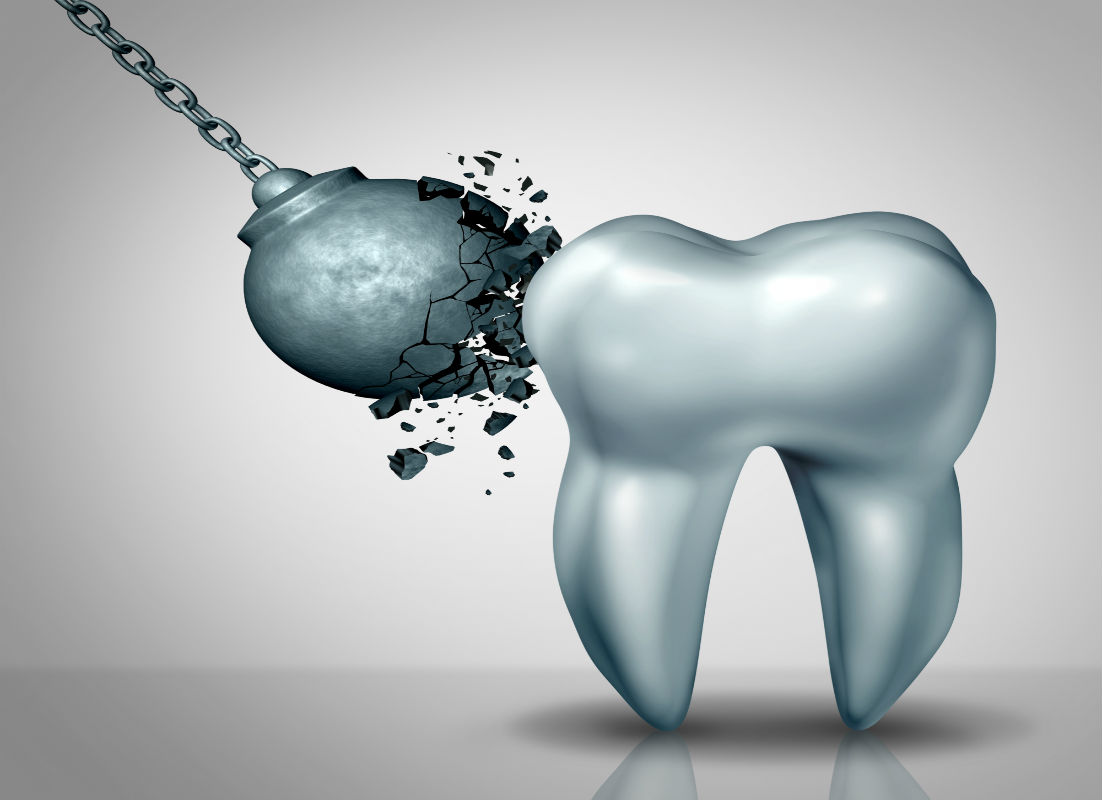
What Causes Tooth Enamel Erosion and Can It Be Treated?
Did you know that tooth enamel is the strongest and most durable tissue within our body? It is stronger than our bones, and harder than steel! Tooth enamel is the substance on the outside layer of your teeth. Enamel is responsible for protecting your teeth from damage.
However, don’t let the strength of enamel fool you. Tooth enamel can be broken down and destroyed, leading to what’s called “enamel erosion.” This can subsequently lead to serious dental problems and pain.
Learn more about tooth enamel erosion, how you can prevent it, and what treatments are available to treat erosion.
Symptoms of Tooth Enamel Erosion
It’s important to first understand the symptoms of enamel erosion, so you can know exactly what to expect if you’re not careful (or if you haven’t been keeping up with your oral hygiene!).
Increased Tooth Sensitivity
As enamel is worn away, a larger portion of your tooth is exposed to the substances you’re eating and drinking. You may feel increased sensitivity to temperature (very hot and/or very cold things), certain textures (crunchy items, hard foods, etc), and tastes (particularly acidic/harsh foods/beverages). Depending on the level of erosion you are facing, this could result in anything from mild discomfort to extreme pain.
Discoloration
Discoloration is one of the first symptoms you’ll notice with enamel erosion. Your teeth can become stained and yellow. The teeth may exhibit varying degrees of discoloration, which can make the teeth look splotchy and not very aesthetically pleasing.
Translucent and/or Shiny Teeth
Along with discoloration, you’ll notice sections of your teeth looking clear or translucent. You may also notice certain spots looking extra shiny.
Chips/Cracks/Indentation in Teeth
As tooth enamel is degraded, your teeth lose strength. This can lead to teeth becoming more easily cracked, chipped, and scratched. You also might notice little indentations in your teeth, known as “cupping”.
What Causes Enamel Erosion?
Just as there are various symptoms of enamel erosion, there are also many causes.
Poor Dental Hygiene
One of the most common causes of enamel erosion is poor dental hygiene. Simply following the basics of dental hygiene is usually enough to prevent erosion.
Considering around half of US adults don’t brush their teeth twice per day (and don’t get us started on how many people don’t floss!), it’s no surprise that many people experience this type of erosion.
Diet
Diets high in sugar, acidic foods (citrus, soda, wine, etc), coffee, and starches can all lead to enamel erosion. When you combine the consumption of these types of substances with poor dental hygiene, you’re setting yourself up for the deterioration of your tooth enamel.
Health Disorders
Certain health disorders can also contribute to enamel erosion.
Dry Mouth
Dry mouth can be caused by a few different things. These include:
- Certain types of drugs (methamphetamines and marijuana, for example)
- Diabetes
- Chemotherapy
- AIDS/HIV
- Tobacco
- Thrush
Low amounts of saliva, like in dry mouth, is a big contributer to erosion.
Eating Disorders
Anorexia often leads to malnutrition, which can cause tooth enamel erosion. Individuals suffering from bulimia are extra susceptible to erosion. Considering the acidity in vomit, the compulsion to vomit on a regular basis erodes tooth enamel. Binge eating disorder, the most common eating disorder in the US, can also lead to the over-consumption of erosion-causing foods that we discussed earlier.
GERD
GERD (gastroesophageal reflux disease) causes stomach acid reflux. These stomach acids are abnormally reversed up the esophagus and can often reach the mouth. This can erode your tooth enamel.
Teeth Grinding
Grinding your teeth is often the result of stress and anxiety. While sporadic teeth grinding is normal and usually not harmful, consistent and persistent grinding of the teeth will definitely wear down your enamel.
How to Treat Tooth Enamel Erosion
The big problem with enamel erosion is that there is no way for your enamel to “grow back”. Enamel isn’t a living tissue, so once the enamel is eroded, there’s no true way to recover it.
Prevention
The fact that tooth enamel is unrecoverable is exactly why preventing enamel erosion from occurring in the first place is the best course of action. This means reducing or eliminating certain foods from your diet, maintaining a good dental hygiene routine, and avoiding practices that can cause enamel erosion.
Mouthguards
If you have a tendency to grind your teeth, it is important to protect them from erosion by wearing a mouthguard. You can also seek ways to reduce stress and anxiety in order to lessen how much or how often you grind your teeth.
Tooth Bonding
If you have already experienced significant erosion, your dentist can assist you with tooth bonding. Tooth bonding involves the placement of a strong, plastic, tooth-like chip over the damaged tooth/teeth. This can protect eroded teeth, chipped/cracked teeth, and teeth with cupping from enamel erosion. Tooth bonding also evens out the coloration of your teeth if you’ve experienced yellowing and/or discoloration.
Veneers and/or Crowns
If you have severe erosion, a dental professional may recommend veneers and/or crowns. These are made of porcelain and are specifically molded to fit your mouth specifically in terms of shape, color, and size. Veneers and crowns fit over your damaged teeth to protect them and will relieve some of the pain or sensitivity you’re feeling.
The Next Step
Enamel erosion can lead to severe pain and dental issues. The best course of action is to maintain your enamel by watching what you eat, treating health problems related to enamel erosion, and maintaining proper dental hygiene.
An important part of that maintenance is visiting a dentist for cleanings and check-ups regularly. We encourage you to contact us to set up an appointment for a cleaning or to discuss your options for treating any enamel erosion.

 (215) 637-7474
(215) 637-7474 APpointments
APpointments